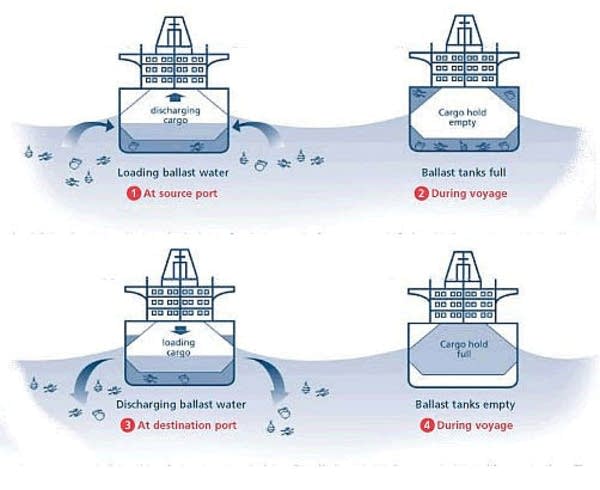Critics argue new ballast water permits are inadequate
Go Deeper.
Create an account or log in to save stories.
Like this?
Thanks for liking this story! We have added it to a list of your favorite stories.

Every year, ocean-going ships and lakers dump millions of gallons of ballast water in the Duluth-Superior port. The ballast is used to stabilize the ships as they move from port to port, and take on cargo.
Sometimes it carries critters from halfway around the world. Dozens of these invasive species have taken up residence in the Great Lakes, and some of them wildly disrupt the ecological balance of their new homes.
""The argument that, 'we can't foresee a better technology' is not good enough."
"Ordinary pollutants actually become diluted if you put them in a big body of water; invasive species, because they live and reproduce, if they become established, they are not diluted," said Matt Norton, an attorney with the Minnesota Center for Environmental Advocacy. "They actually self-magnify, they multiply."
Norton's group sued to force the state to start regulating ballast water.
Turn Up Your Support
MPR News helps you turn down the noise and build shared understanding. Turn up your support for this public resource and keep trusted journalism accessible to all.
As a result, the Minnesota Pollution Control Agency now requires ships to install equipment to kill organisms in the ballast, but the equipment doesn't have to be in place and working until 2016.
The MPCA's Jeff Stollenwerk said Minnesota's system is a good one. He said Minnesota is the only state that has rules for all ships on its Great Lake -- Wisconsin's permit only covers ocean-going ships.
"Our permit imposes the most stringent standards and compliance schedule that's technologically achievable, and that is the best that we can do to protect Lake Superior today," Stollenwerk said.

But it's not enough, said the MCEA's Matt Norton. He said the MPCA's system is too lenient and will take too long to implement.
"The argument that, 'we can't foresee a better technology' is not good enough to allow them to continue degrading the water," Norton said.
Norton said California has a standard that's one-hundred times more stringent than Minnesota's. He said if Minnesota applied that standard, it would do a lot more to protect Lake Superior's waters from further degradation.
But Stollenwerk said the technology just doesn't exist yet to achieve those high standards.
"Imposing an impossible schedule for the installation of ballast water treatment systems would turn our permit into a meaningless paperwork exercise with no environmental benefit, and we don't think that's a wise thing to do," he said. Stollenwerk said the MPCA has asked the legislature for money to speed up the research on ballast water treatment systems.
So far, the latest destructive invader, Viral Hemorrhagic Septicemia or VHS, has not been detected in Lake Superior.




